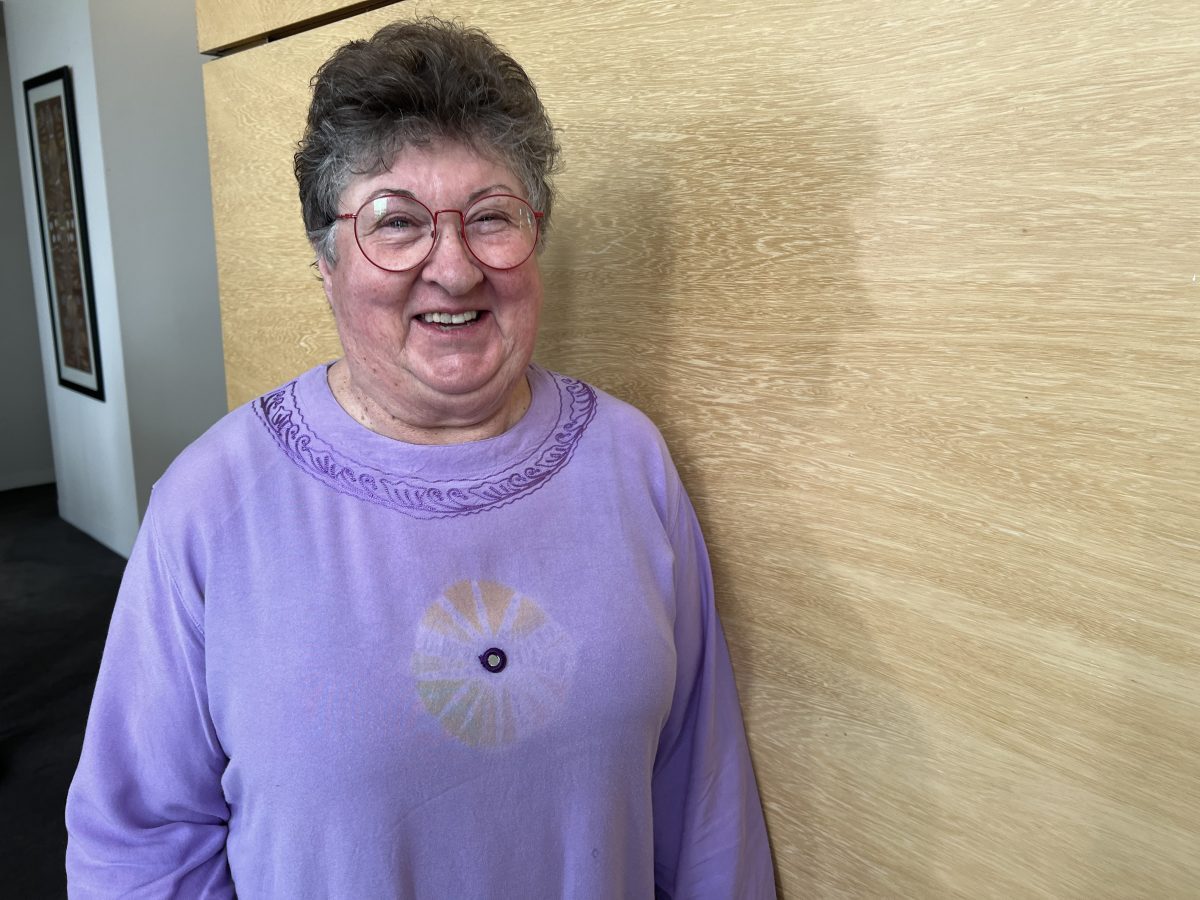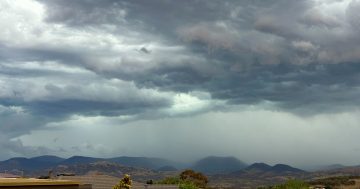
Baby Molly knows that prevention is best for asthmatic big sister Caillie. Photo: Chris Roe.
Caroline Applebee lives at The Rock and has been contending with asthma her whole life.
“Wagga’s the worst I’ve lived in for asthma triggers and things,” she says, telling her story at this year’s asthma season awareness launch.
“I just came up from the car without my mask and thought, that was a really silly thing to do in this wind!”
For Ms Applebee, keeping an eye on the weather is a daily concern as her asthma has landed her in hospital on multiple occasions.
“I wear a mask all the time at the moment because the pollens have already started,” she explains.
With spring thunderstorms on the way, she says anyone with the condition needs to be on the front foot.
“The worst one is the ‘thunderstorm asthma’ that we’ve got coming up, so you’ve got to be aware of that season when it’s starting,” Ms Applebee warns.
“Stay on your meds, because a lot of people when they’re feeling good, they go off this, off their asthma plan, and that’s the worst thing to do.”

Caroline Applebee says she would not be alive without her asthma care team. Photo: Chris Roe.
Respiratory specialist Dr Adriaan Venter says that the danger of the thunderstorm asthma phenomenon shouldn’t be underestimated.
“In 1997, Wagga had a big thunderstorm on the 30 October of that year and about 300 people were admitted to the Wagga Base emergency department,” he says.
“Asthma management in the Riverina was not as good as it was supposed to be, even though medication was already available at that point in time.
“Over the years, a lot of things have changed.”
Dr Venter explains that the larger volumes of pollen in the air at this time of year are a risk for those with “uncontrolled asthma” and that prevention is the key to keeping sufferers out of intensive care.
“If you do have a diagnosis of asthma, it’s very, very important that you ensure you’re on the correct medication, that you are on the preventative medication,” he says.
“Preventative medication, not reliever medication.”
While Wagga is well known as a risk area for thunderstorm asthma, Dr Venter says it’s not necessarily worse than other parts of the country.
“Australia has the highest incidence in the world, along with New Zealand,” he says.
“Why Wagga is known for this is because of that publication in 1997 when 300 cases presented here, and the spotlight was shone on Wagga.
“You can get this phenomenon anywhere in Australia where there’s lots of pollen and there’s thunderstorms. It can happen in Sydney. It can happen anywhere.”
Another tool for local sufferers is the CSU Asthma Register which Ms Applebee says she benefits from routinely.
“You just go onto their website and register with your phone number and during the thunderstorm season, CSU will send you an SMS as a warning that there’s thunderstorms around, to get your preventers and get everything out and stay inside,” she explains.
CSU’s Dr Bruce Graham has been overseeing the notification system for the past 15 years and says it is also important for itinerant workers to also be aware of the local risk factors.
“People come here for short periods with the armed forces, the army and the air force, and also university students,” he explains.
“They may never have had asthma symptoms before that they’re aware of – all of a sudden they’ve got different triggers, such as the pollen counts.”
Ms Applebee urges anyone with asthma who does not have a management plan to see a doctor as soon as possible.
“If you do have any sort of coughing or whatever, definitely go to your GP – they’re your best friend during this,” she says.
“I wouldn’t be here without [them].”















